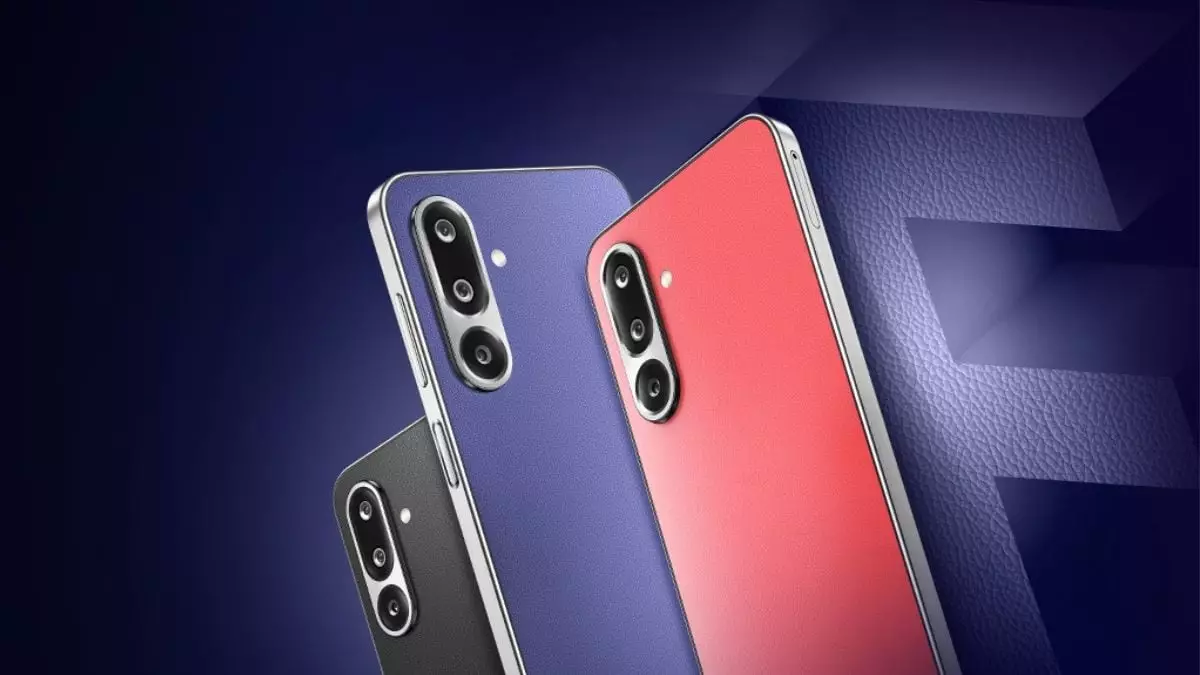The launch of the Samsung Galaxy F36 5G in India reflects Samsung’s attempt to stay relevant in a fiercely competitive segment dominated by budget smartphones. Priced at under Rs. 20,000, this device is positioned as an affordable yet capable option. However, one must critically assess whether it truly offers value in the face of numerous alternatives. While Samsung touts a premium leather finish rear and a sizable 6.7-inch Super AMOLED display, these features are not revolutionary at this price point. They are, at best, expected standards—nothing extraordinary to separate the Galaxy F36 5G from similar offerings from brands like Realme, Xiaomi, and Motorola.
A deeper look reveals that Samsung’s strategic focus on design may be a double-edged sword. While a leather finish back exudes a premium aesthetic, it is unlikely to withstand everyday wear and tear without showing scratches or fading. Moreover, the device’s weight—almost 200 grams—raises questions about long-term comfort and portability, especially for a budget-oriented user base that often values lightweight devices. The choice of a plastic frame further diminishes its premium appeal, conflicting with the leather back that promises to emulate luxury.
Performance and Hardware – Capable but Not Cutting-Edge
The Galaxy F36 5G is powered by the Exynos 1380 chipset coupled with up to 8GB RAM and 256GB storage. While these specifications promise decent performance for social media, browsing, and multitasking, they are not groundbreaking. Samsung, perhaps aware of this, emphasizes AI features—Google’s Circle to Search, Gemini Live, and AI-powered editing tools—aimed at enhancing user experience. However, software enhancements cannot compensate for hardware limitations; the phone’s performance will inevitably lag behind flagship devices, and even some mid-range models offering better processors.
The display is a bright spot, with a 120Hz refresh rate and Gorilla Glass Victus+ protection—features that make everyday interactions smoother and more engaging. But here’s the paradox: the device’s aesthetics and hardware specs seem to target aspirational consumers who may not completely appreciate the compromises underneath. The inclusion of a 50MP primary sensor, OIS, and 4K video recording capabilities in the triple camera setup suggests a push toward photography enthusiasts. Yet, unless this is paired with equally capable software processing, picture quality may fall short, especially in challenging lighting conditions.
Software Support and Future-Proofing: Promises Without Guarantees
Samsung’s bold claim of delivering six generations of Android updates and seven years of security patches might appear as a significant advantage. Yet, reality often tells a different story. Software updates are slow to roll out, and mid-range phones tend to remain relevant for only a few years before hardware becomes obsolete. While Samsung’s commitment provides some reassurance, users should remain cautious about relying heavily on software longevity as a selling point.
The device ships with Android-15-based One UI 7 out of the box, bringing a host of AI-assisted features and customization options. However, the experience hinges on Samsung’s implementation—poor optimization or delayed updates could diminish the promised software support. In a landscape where user privacy and data security are increasingly paramount, the AI features, while innovative, also raise questions about data collection and user control.
Broader Implications for Consumers and Industry
The Galaxy F36 5G exemplifies Samsung’s strategic pivot—an attempt to balance affordability with some semblance of premium feel. Yet, this approach underscores a broader industry trend: brands are increasingly relying on superficial upgrades to attract consumers rather than delivering truly groundbreaking innovations. For center-left liberal-minded consumers, this might seem like an acceptable compromise, prioritizing accessibility and affordability. Still, it also hints at a growing consumer culture driven more by aesthetics and brand reputation than genuine technological breakthroughs.
In a time when technology can serve as a platform for social equality—providing access to education, healthcare, and connectivity—the focus on middle-tier devices like the Galaxy F36 5G should be a call for more meaningful innovation. Instead of just superficial design and incremental hardware upgrades, manufacturers should be compelled to focus on sustainability, software transparency, and long-term service support.
While the Galaxy F36 5G might look appealing on paper and in marketing materials, critical evaluation reveals it is more of a calculated retail move than a truly revolutionary device. It caters to a price-conscious demographic but offers little to challenge the status quo—a trend that raises questions about the future direction of smartphone innovation and consumer choice.


Leave a Reply